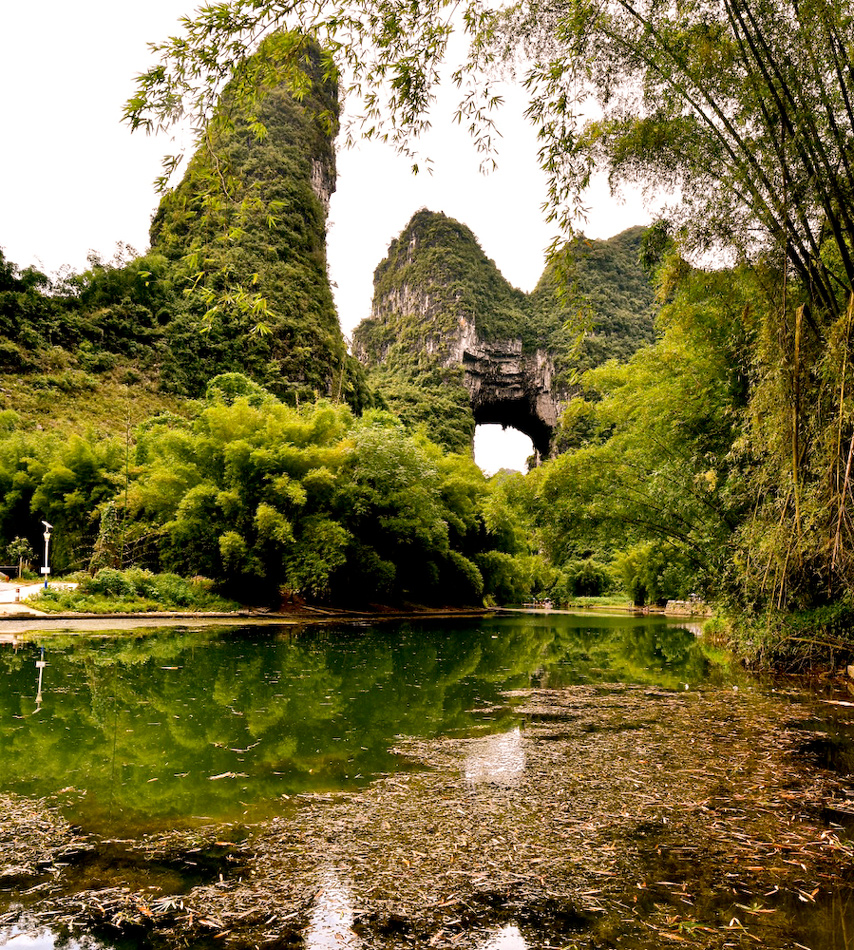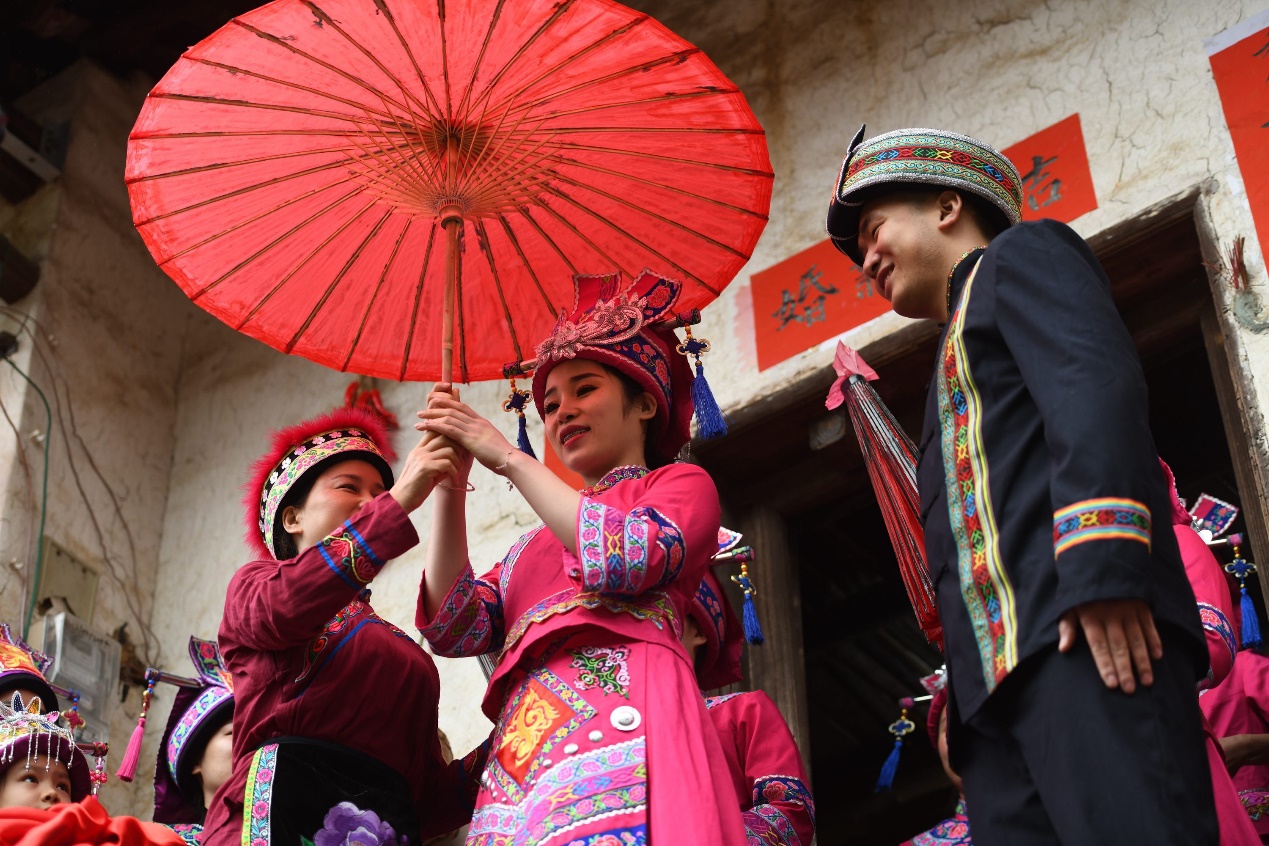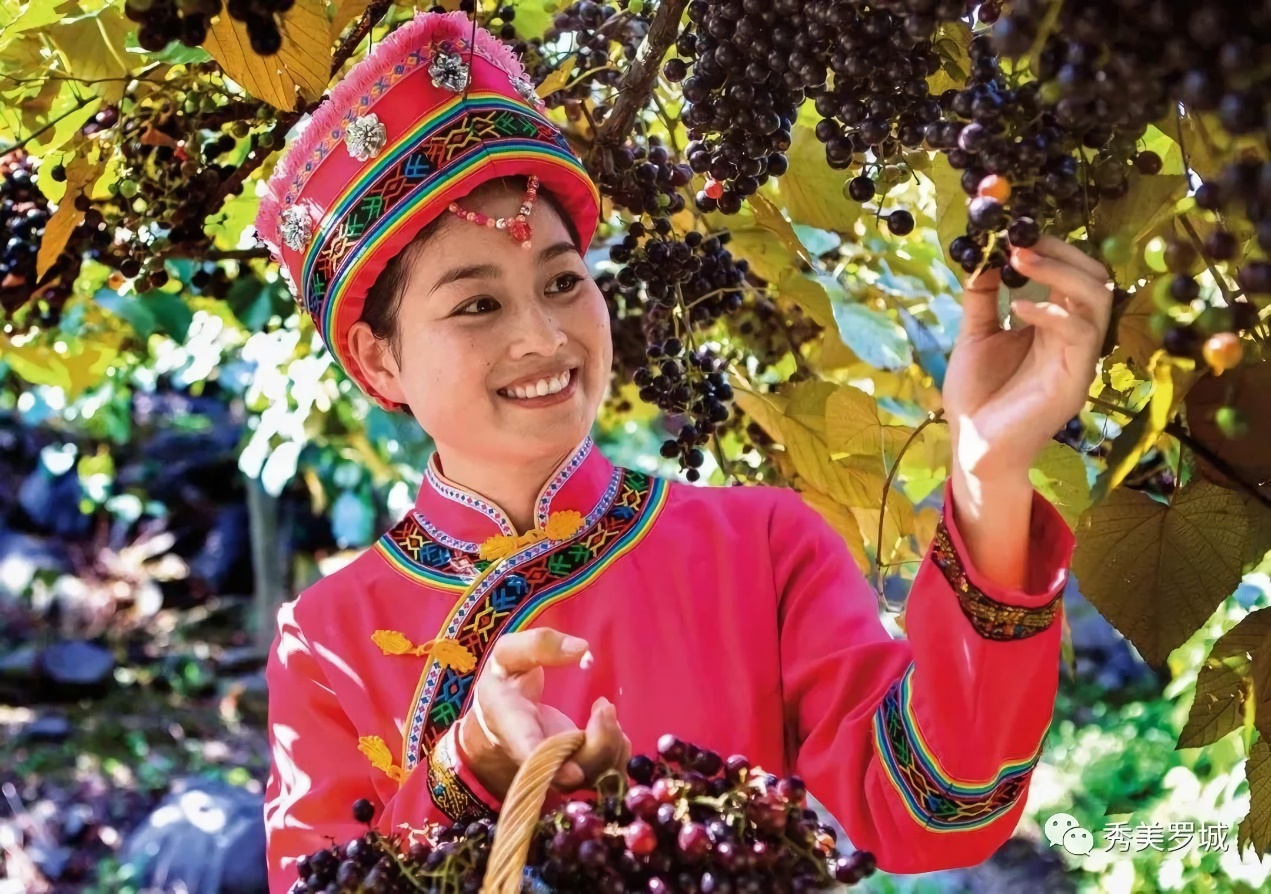Luocheng: Home of Mulao with Beautiful Landscapes
Publication time:2021-11-29 15:12:00
By Zhang Xiaoyan
Luocheng Mulao Autonomous County is located in the northwest of south China’s Guangxi Zhuang Autonomous Region, where the environment is elegant and the scenery is beautiful. It boasts breathtaking mountains, waters, and landscapes that have a unique local flavor and is the home of the 1,000-year-old Mulao tribe that has bred the culture and customs with distinctive characteristics.
Situated at the south foot of the center of the Jiuwandashan Mountains, Luocheng has a pleasant climate, without either severe cold in winter or intense heat in summer. The karst landform is developed and the natural ecology is complete. In addition, being the legendary hometown of Third Sister Liu, a fairy singer not only famous in China but also well known in Southeast Asia, adds a more charming natural color to the county, a magical land. The tourism resources in this Mulao homeland are rich: ethnic customs are integrated with green mountains, clear waters, strange caves, beautiful stones, and abundant products.
Lucid waters and lush mountains
The scenery of the Jianjiang River, or the Sword River, can be sighted along the river section of Huaiqun Town, where strange peaks stand out, clear water is long, and beautiful sights are everywhere, which form the 10-mile-long Sword River Gallery, applauded by tourists as “It’s not Guilin, but it’s better than Guilin that boasts the most beautiful scenes under the sky”. All of the hills and mountains along the river are full of life and vitality.
The Tianmen, or Heavenly Gate, the scenic spot is located 3.6 km west of Huaiqun Town, where mountains embrace green water and the scenery is very pleasant. There is a naturally formed natural arch, called “Chuanyan”, or “Going-Through Rock”. The rock wall is as smooth as a mill, just like an open giant gateway. The clear and secluded Yuanmeng River flows under the rock, with a clear water surface that can be seen through right down to the river bottom, and that reflects the shady green bamboos on both sides of the river. Tourists can have fun in the water or enjoy the great sight by passing through the naturally formed rock gate by cruise ship.
The Wuyang River rises from the depths of the Jiuwandashan Mountain and flows gently along the Tianlong Mountains. By the banks are green bamboos and its shores are full of mysteries. The Longjiao Mountain resembles a Chinese dragon poking its head out of the water with its two “horns” standing straightly and its body hidden in the water. Drifting down the river in a raft, tourists can see the Mulao people’s villages scattered throughout. The pastoral scene is so beautiful that it is just like a Chinese-style ink painting landscape.
Ormosia is also called love beans in China. A more-than-667-hectare Ormosia forest can be found in the mountains near the banks of the Wuyang River. The spring water in the forest brings nourishment to the red beans and as the namesake suggests, to true love as well. These trees grow in the water which runs over the rocks. The old vines wind themselves around the trunks of the trees. It is hard to tell if it is the trees that hold the vines or if it is the vines that wind around the trees. Their lives have been so closely related that they can be compared to the protagonists of a life-and-death drama of true love. Young people come to the woods, sing the mountain songs and pick love peas to give to their sweethearts. The woods of Ormosia trees are the birthplace and home of love.

Home of Mulao people
The Mulao people are one of the 56 ethnic groups officially recognized by the People’s Republic of China, who are mountain people with a population of about 300,000. The majority of the Mulao people live in Luocheng County, the only Mulao autonomous county in China and the largest settlement area for the Mulao ethnic group, where rich cultures and customs have developed over the thousand years of history.
Shiwei Ancient Village in Luocheng Mulao Autonomous County can be traced back to the reign of Emperor Hongwu (1368-1398) in the Ming Dynasty (1368-1644). Inhabitants here share the same surname Yin (literally means “Silver”) and are all of the Mulao ethnicity.
There exist more than 70 ancient buildings in the village that were constructed during the Qing Dynasty (1644-1911) and the Republic of China (1912-1949). Ancient tablets, old bridges, and the stone masts for scholarly honors in feudal times are witnesses to the splendid history of the village. The 70-meter-long stone wall, partly constructed with mixed mud and mortar, possesses gun holes and guarding passes. It is the largest and most complete defensive wall found in Luocheng.
In 2012, the village was designated as a pilot village for the “protection and development of characteristic villages” project by the Ethnic and Religious Affairs Committee of Guangxi. The ancient dwellings in the village have been fully restored and renovated since then. A folk museum for the Mulao ethnic group was also established here. In 2014, Shiwei Village was listed as part of the first batch of the “Villages with Ethnic Characteristics in China” by the Chinese National Ethnic Affairs Commission.
Rich ethnic culture of Mulao
The folk songs of the Mulao ethnic group are collectively created by the Mulao people. They reflect Mulao's work and life and are sung from generation to generation. They are used to spread history, culture, work knowledge, and interpersonal communication.
The folk songs of the Mulao ethnic group can be divided into two types. One is mostly based around historical figures, hero stories, and folklore, while the other is based on improvised singing with no fixed lyrics, spanning songs about love, etiquette, and customs. To date, there are 44 kinds of song names and 90 sentence patterns, mainly with a four-sentence style, a flexible number of words in each sentence, as well as two-sentence rhymes.
The songs are known for their simple techniques, vivid language, vast imagination, and excellent metaphors. They accumulate the understanding, practice, and life experience of the Mulao people on society and nature, reflecting the national character and the natural aesthetic characteristics of the Mulao.
Zoupo (literally means “Walking on the Slopes”) Festival is a traditional social festival for the youth of the Mulao ethnic group, which can be dated back to the Qing Dynasty (1644-1911) when Mulao people would celebrate it in the first and the eighth months of the lunar calendar every year.
During the festival, boys and girls dressed in their traditional clothing, come to the scheduled slopes in knots and sing folk songs in an antiphonal style, whereby they can make new friends and find their partners. Nowadays, the Zoupo Festival of the Mulao people is beyond love and romance, with more interesting events included. The festival is an intangible cultural heritage at the Guangxi Zhuang Autonomous Region level.

Land of the grape
A mountainous area Luocheng has the soil, light, rainfall, and other natural conditions that are good for the growth of wild hairy grapes. In particular, the low degree of industrialization of the county ensures the fruit grows in a pollution-free environment. The wine locally made from wild hairy grapes is amber in color, dark red, and bright in appearance, which tastes sweet, medium and slightly sour, mellow and refreshing, with a nice aftertaste, a perfect combination of color, aroma, and taste.
Wild hairy grapes are mainly distributed in the western villages and towns of the county, with an annual output of about4,000 tons. Luocheng was recognized as “the hometown of wild hairy grapes in China” in 2000 and granted the product certification of geographical indication (mark of origin) in 2004.
Boasting such fascinating scenery and unique ethnic custom, Luocheng deserves a visit!


